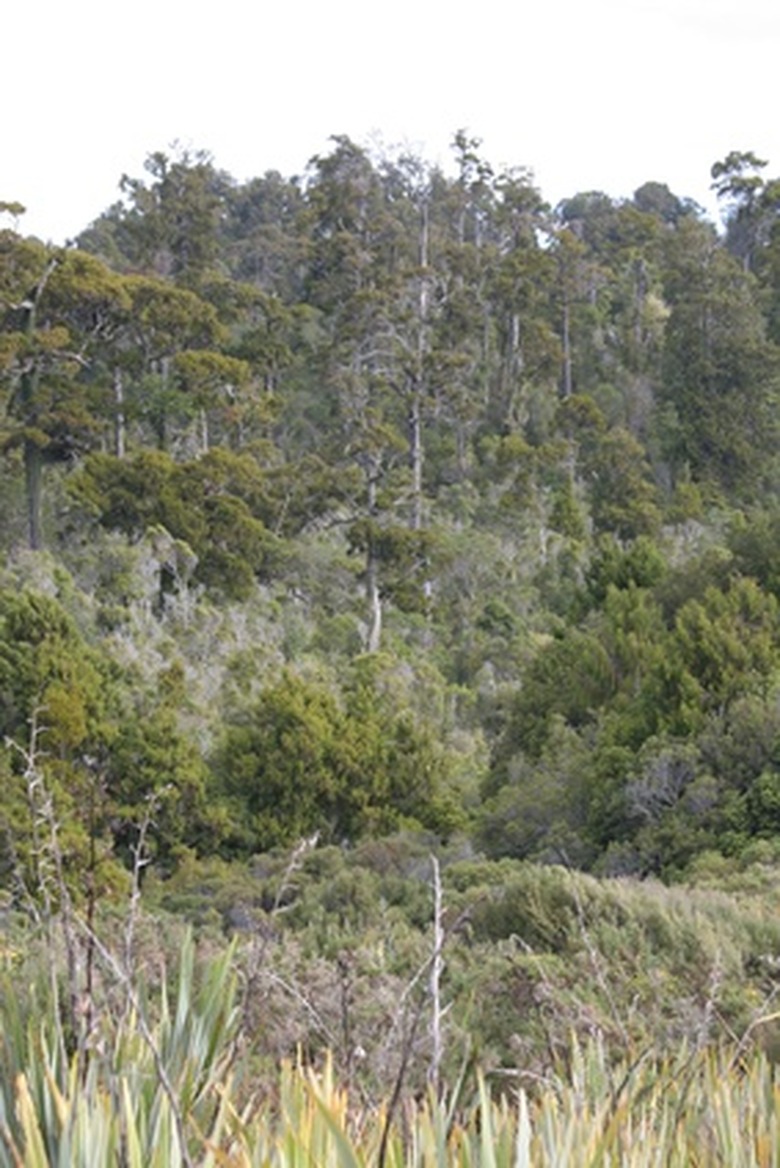Mint Plants Of Hawaii
Hawaii's native mints are a charming, paradoxical group of plants which don't look, or even smell anything like other mints. Some botanists theorize that the absence of predators in Hawaii caused these mints to gradually lose the aromatic defenses of their ancestors. These diverse beauties more than make up for the lack of aromatic foliage with their beautiful, often fragrant flowers and lovely habit. The mint family is represented by four genera in Hawaii.
Haplostachys (Honohono)
This entire endemic genus is critically endangered, with at least four species that have gone extinct since Western contact. Introduced grazing animals, which relish these tender plants, are thought to be the primary cause of their decimation. These upright herbaceous plants have large hairy leaves and succulent, square stems characteristic of other members of the mint family.
- Hawaii's native mints are a charming, paradoxical group of plants which don't look, or even smell anything like other mints.
- Some botanists theorize that the absence of predators in Hawaii caused these mints to gradually lose the aromatic defenses of their ancestors.
This genus is represented by H. haplostachya, believed to be its only surviving member. It is limited to one small, isolated population on Hawaii Island. Honohonos are found at high elevations, where they grow in dry, cindery soils. These plants grow up to three feet high and produce spikes of large, white curved flowers.
Phyllostegia (Ulihi)
This genus is represented by twenty eight endemic species, which are classified from rare, to endangered to extinct. They grow in the shade of wet forests as small herbaceous shrubs or climbing woody vines. They produce large flowers, clustered on erect spikes in white, pink lavender, purple or red.
- This genus is represented by H. haplostachya, believed to be its only surviving member.
- Honohonos are found at high elevations, where they grow in dry, cindery soils.
P. ambigua is a shrubby, occasionally vine like mint, native to wet forests on Maui and Hawaii Island. It has smooth, bright green leaves and produces tall spikes of large, fragrant, white flowers.
P. hirsuta is an endangered low shrubby mint found in the wet forested mountains of Oahu. This mint has succulent stems and leaves which are densely covered with white hairs. It produces large, curved purple flowers, which are sometimes fragrant.
Plectranthus (Ala ala wai nui)
A single species of this indigenous mint is found on all the main islands. It is the only genus of mint native to Hawaii that has no threatened members.
- P. ambigua is a shrubby, occasionally vine like mint, native to wet forests on Maui and Hawaii Island.
Ala ala wai nui (P. parviflorus) is a small herbaceous plants found in arid, rocky places at low elevations. It has bright green, rounded, velvety leaves and produces copious spikes of small, white to lavender flowers. The flowers develop into small, light brown seeds, which are held on the plant for a few weeks until they are dispersed by wind. Ala ala wai nui is easily grown in the Hawaiian garden as an informal, spreading ground cover, or in pots, as an attractive, cascading plant. It requires well drained soil, full to partial sun and moderate irrigation. This mint will reseed readily and could become weedy.
Stenogyne (Ma ohi ohi)
This endemic Hawaiian genus is represented by 20 species, with members found on all the main islands. They are semi woody, branching vines, with crisp, rounded leaves. Their large tubular flowers have long corollas suggesting their ancestral pollinators were long billed, native honeycreepers. Some species are locally available from native plant nurseries and may succeed in the proper climate.
- Ala ala wai nui (P. parviflorus) is a small herbaceous plants found in arid, rocky places at low elevations.
- The flowers develop into small, light brown seeds, which are held on the plant for a few weeks until they are dispersed by wind.
S. purpurea is a trailing vine found in the wet forests of Kauai. This mint bears clusters of beautiful, large purple flowers at the stem ends.
S. kamehamehae grows in high elevation wet forests on Maui and Molokai. It produces stunning flowers from deep pink to bright red.
References
- "Growing Hawaii's Native Plants;" Kerin Lilleeng-Rosenberger; 2005
- "Manual of the Flowering Plants of Hawaii;" Warren Wagner, Derral Herbst and S.H. Sohmer; 1990
